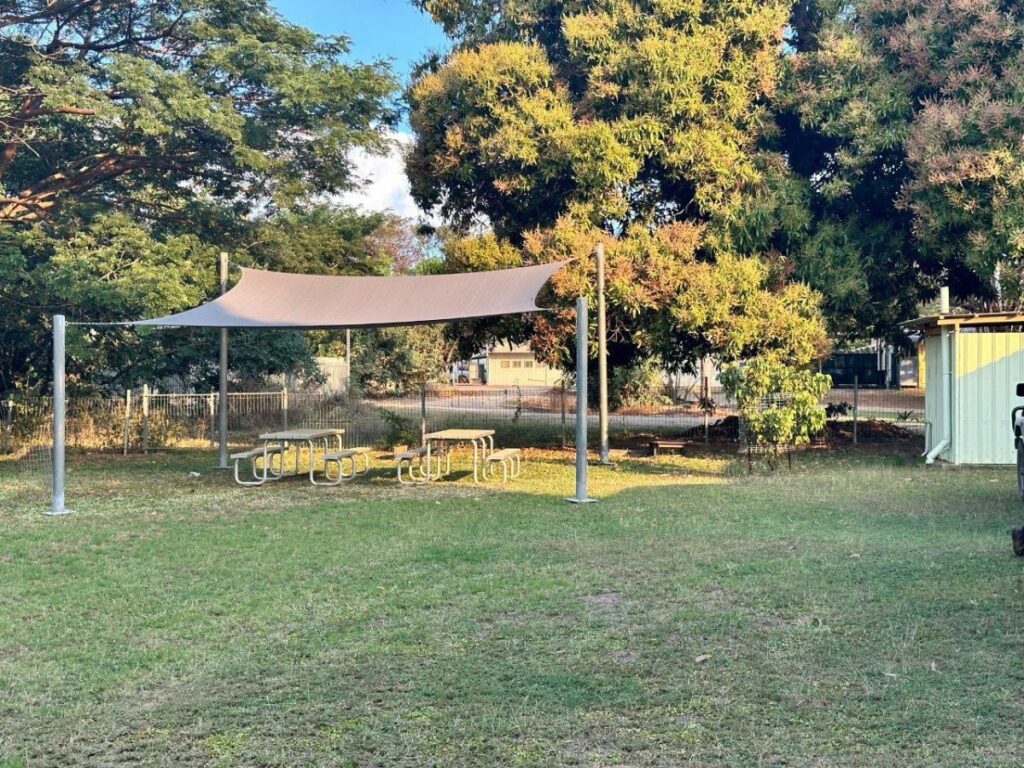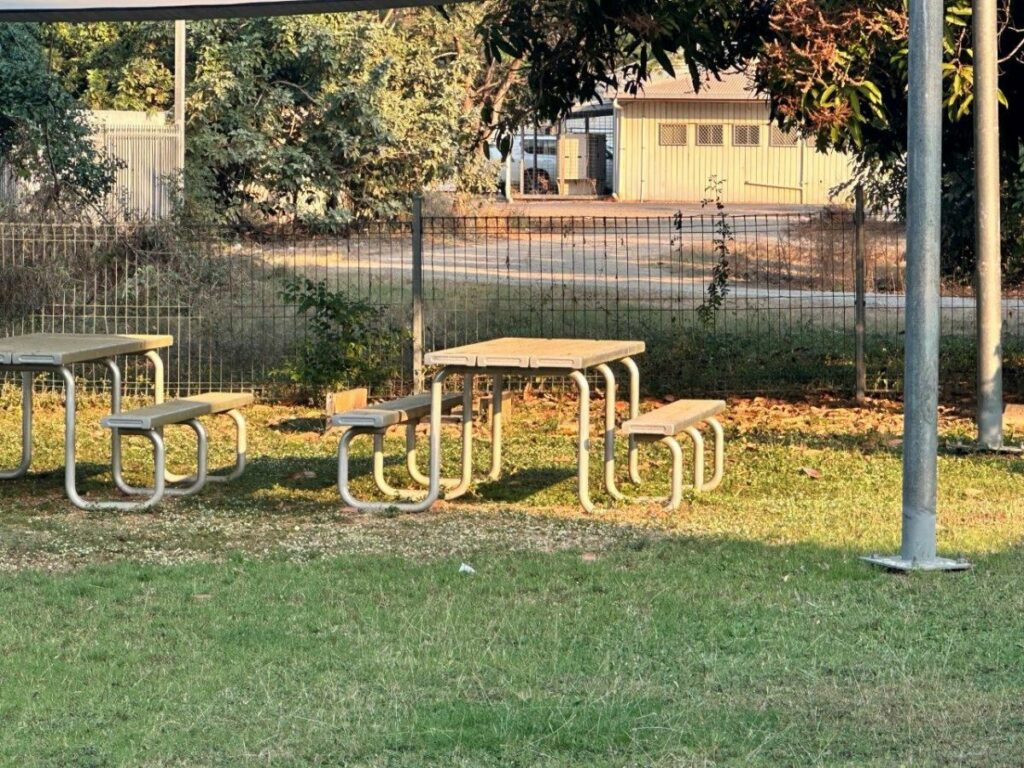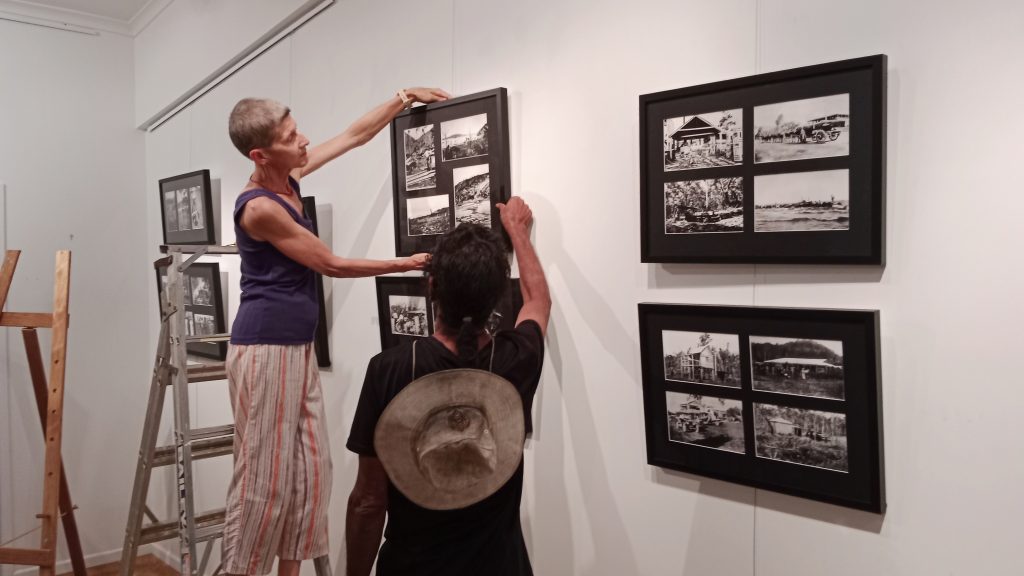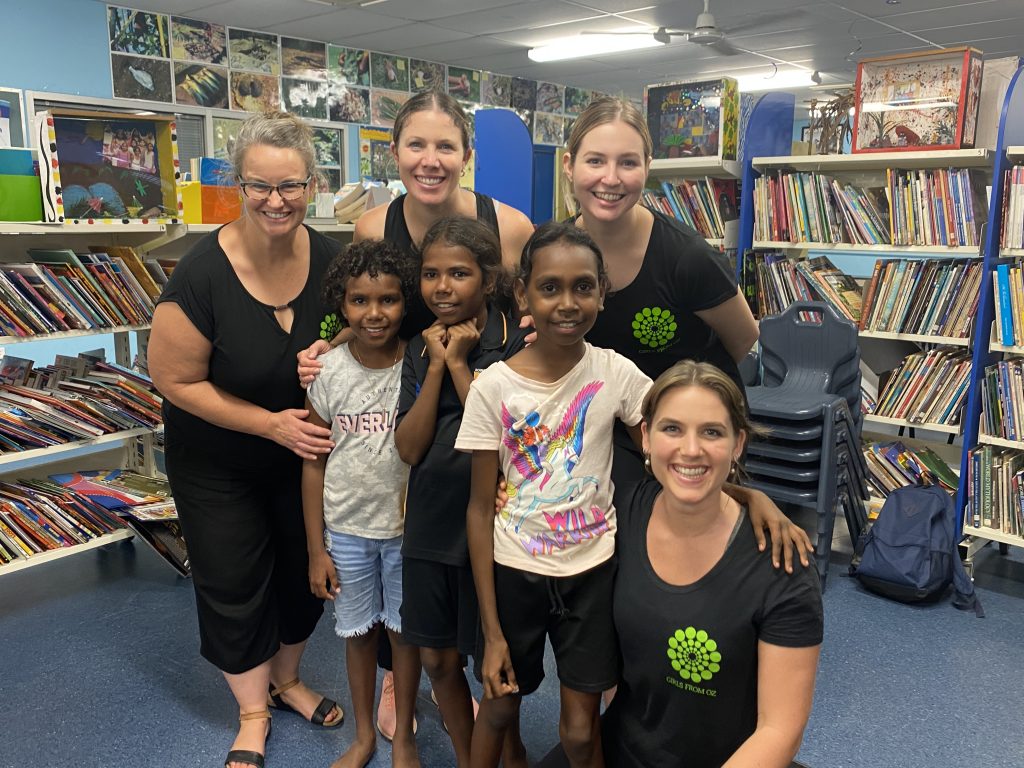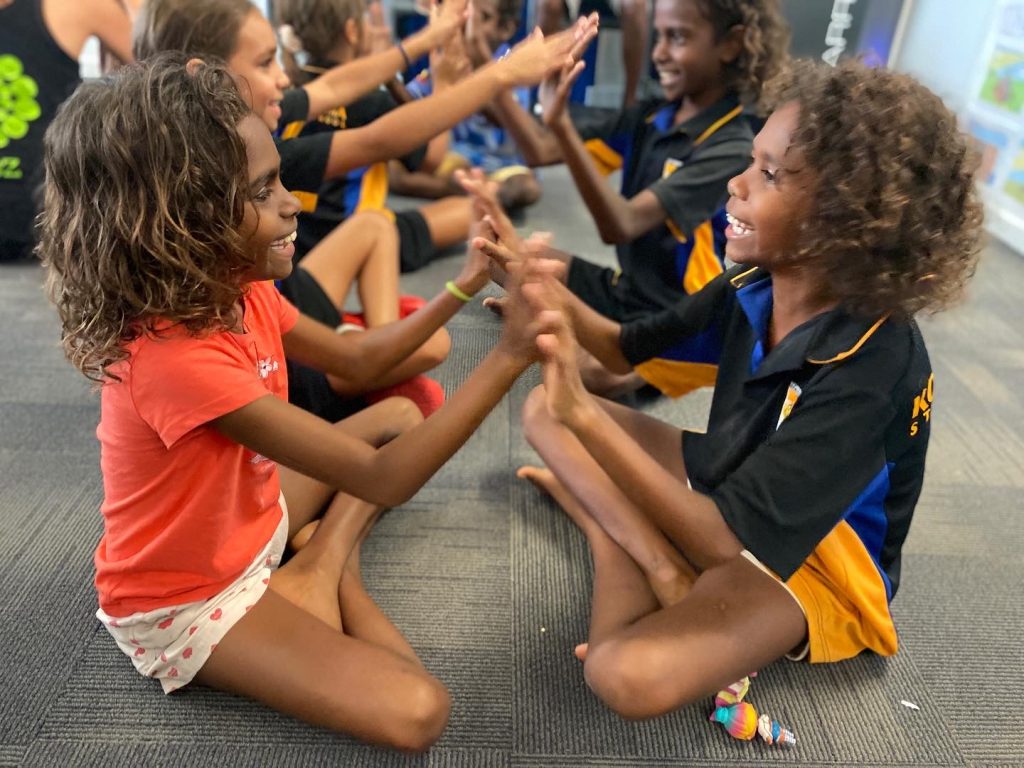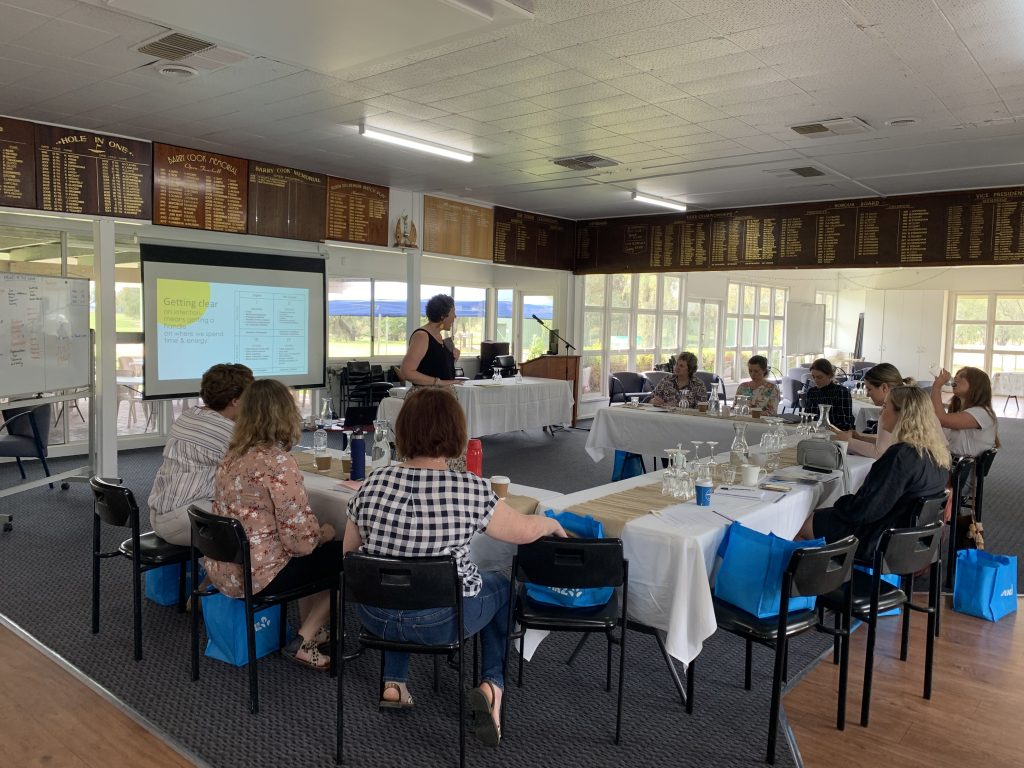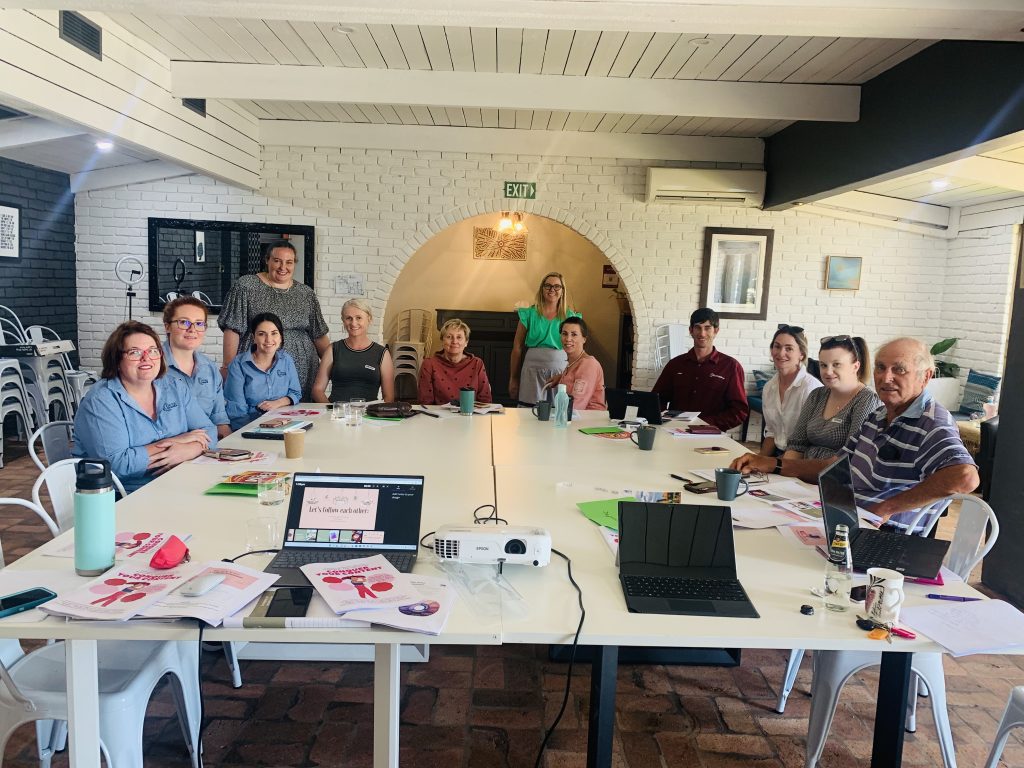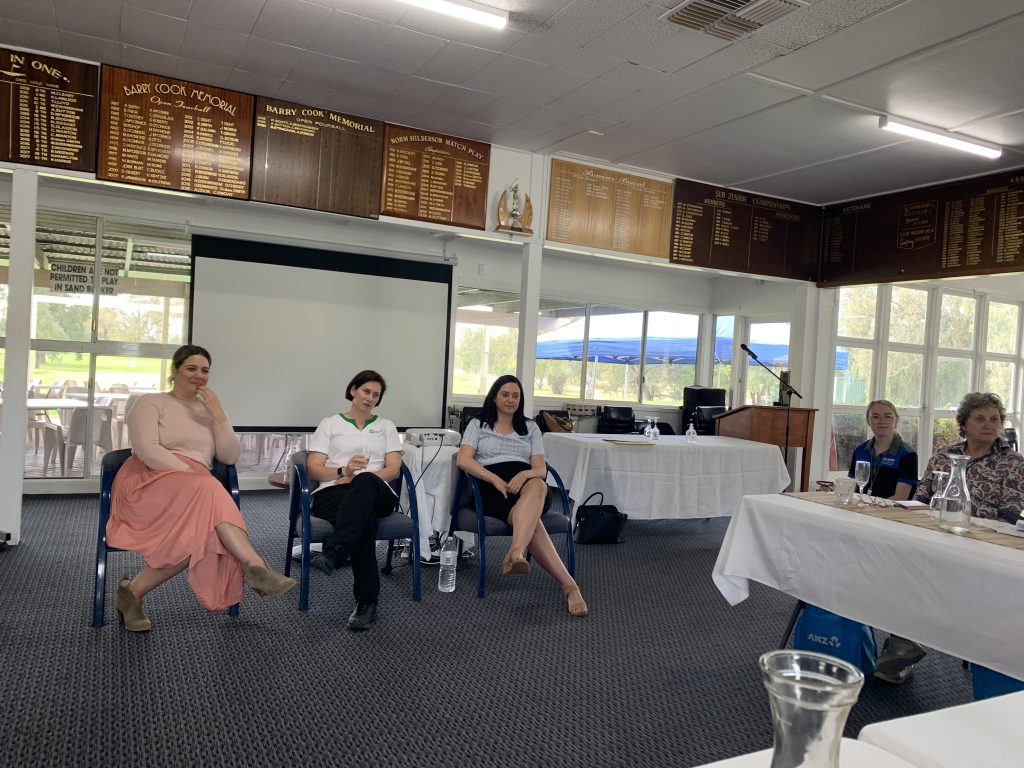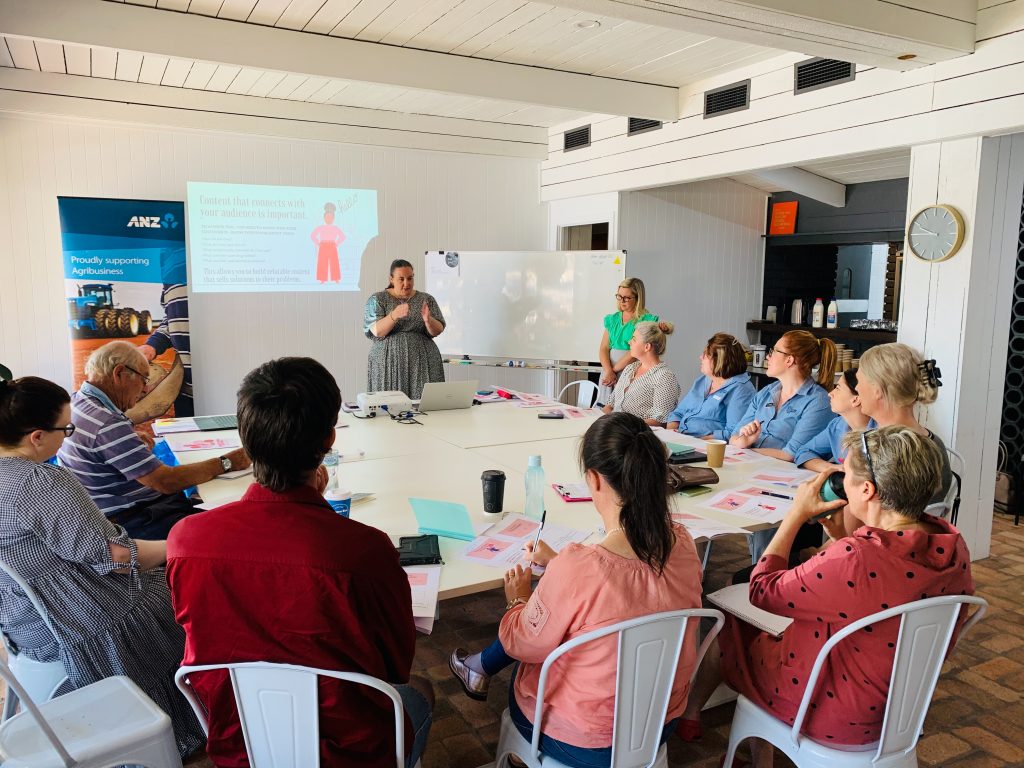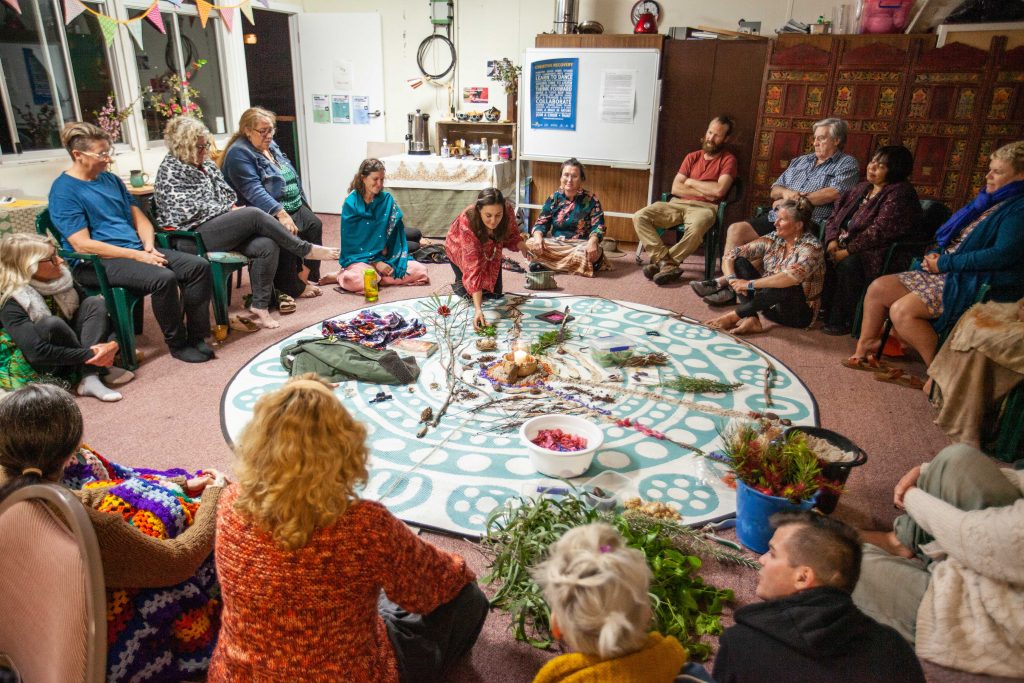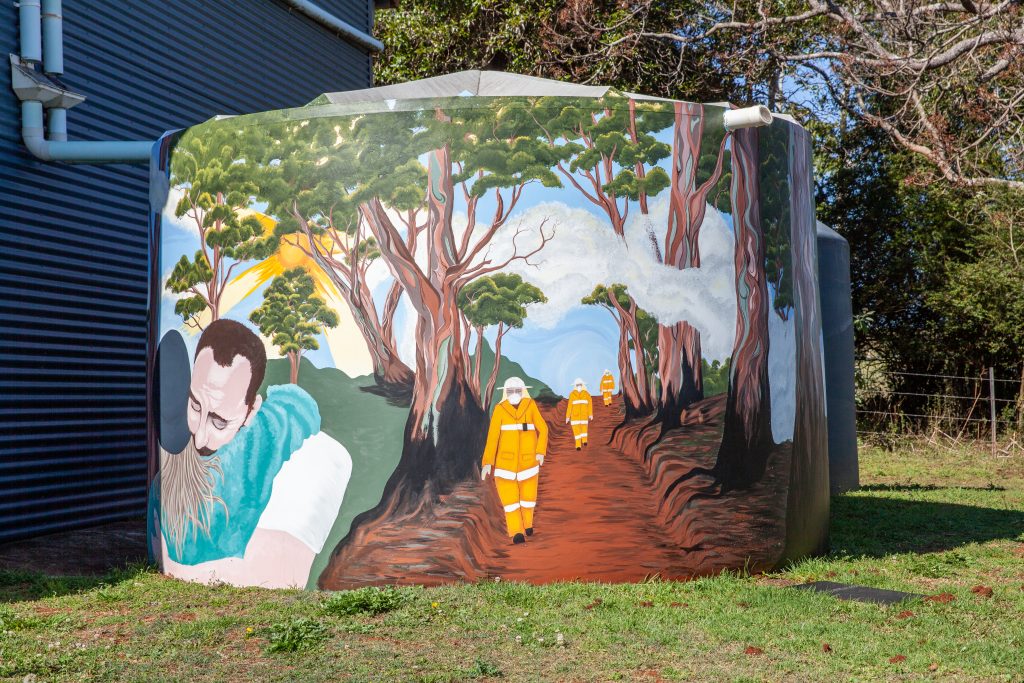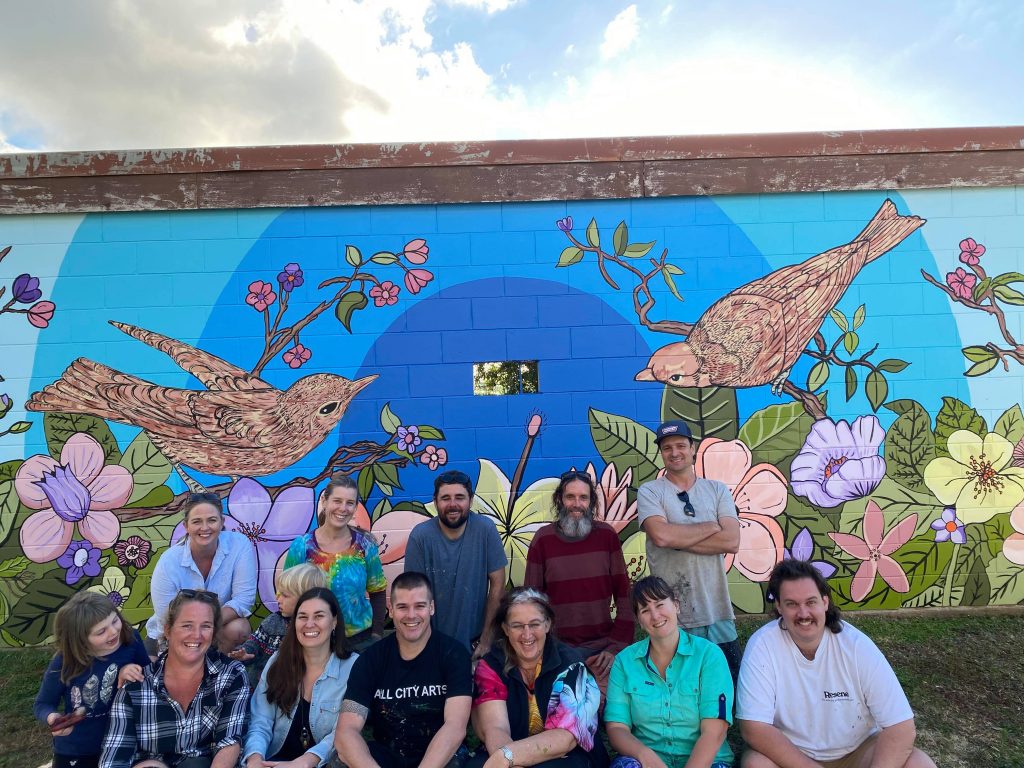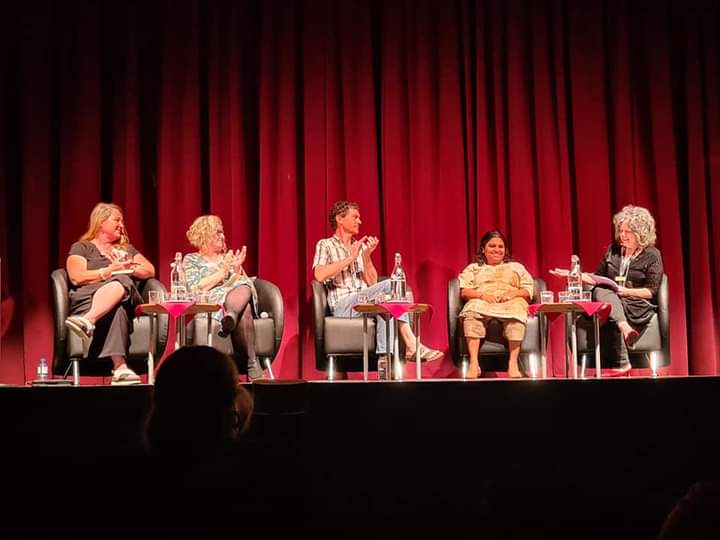Foundation for Rural & Regional Renewal (FRRR)
Kowanyama is a small, very remote town in the Gulf Country in QLD and it ranks as one of Australia’s most socially and economically disadvantaged communities.
Sadly, the community has experienced a disproportionate amount of sorrow and trauma in recent years, yet it has limited places for families and community groups to safely meet and hold traditional gatherings, eat together or hold community events.
But that’s changed thanks in part to a $10,000 Strengthening Rural Communities grant. A new communal fire pit, picnic table and shelter against harsh weather conditions have been built. The people of Kowanyama now have a place to socialise and connect, which is a critical part of fostering wellbeing and strengthening the community.
This project was led by Out There Kowanyama (OTK), a dynamic, volunteer-run organisation that works to create hope and opportunity in the remote community by empowering youth with various projects and activities. OTK has a strong understanding of the community’s needs, and this project was an expansion of the community park and picnic area they had previously developed.
Although the pandemic caused a delay in completing this project, the new amenities were successfully installed by 2021 and the community reaction has been wonderful.
OTK Treasurer, Lara Wieland, shared the following with us:
“This is a place we could come and relax and get away from things when we’re stressed.”
“This could be a neutral place for mediations.”
“Counsellors could use this to catch up with people who don’t want a home or clinic visit.”
“We will hold our next women’s group here.”
“What a great place to come and hold an event. I especially like the firepit.”
“People can gather here in the shade after funerals or christenings and the old people will have somewhere shady to sit.”
Funding for prevention, preparedness and recovery projects
FRRR and Suncorp Group are inviting local not-for-profit organisations (NFPs) in remote, rural and regional Queensland communities impacted by Cyclone Jasper and Kirrily to apply for a share of $300,000 in funding to support ongoing resilience building and recovery efforts.
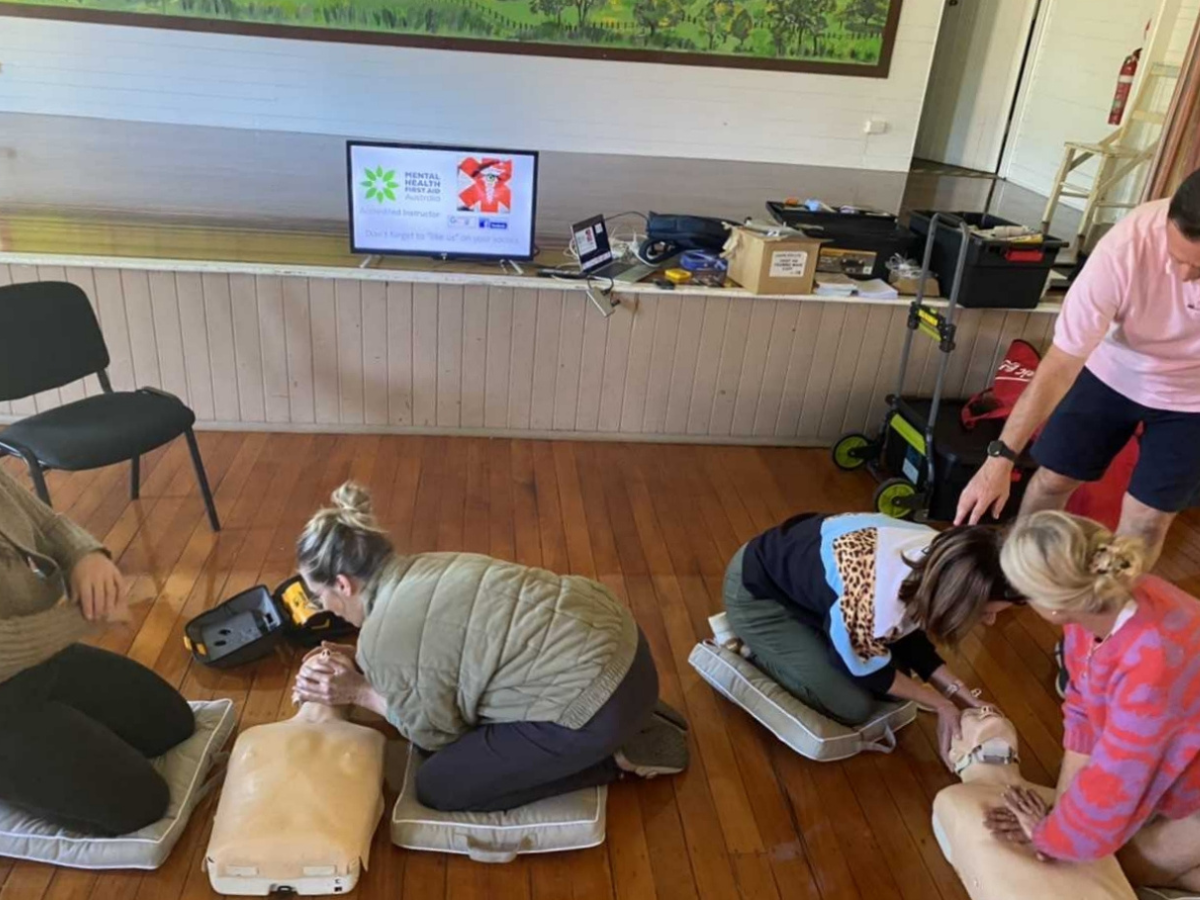
This week marks six months since Cyclone Jasper crossed the Far North coast (13 December 2023) causing widespread destruction and five months since Cyclone Kirrily crossed the North Queensland coast (25 January 2024) and became a state-wide disaster event, as the rain moved south and west (3 February 2024).
Local NFPs in the Far North and North Queensland, and other remote, rural and regional communities impacted by the cyclones, including McKinlay and Western Downs[1], can apply for grants up to $20,000 through the Rebuilding Futures program, for community-led activities that address local prevention, preparedness and recovery needs.
Nina O’Brien, FRRR’s Disaster Resilience & Recovery Lead, said that it is vital that disaster-impacted communities, are supported to proactively take action to prevent and prepare for, as well as respond to, the impacts of extreme weather events like Tropical Cyclones Jasper and Kirrily.
“The effects of an extreme weather event do not dissipate when the immediate danger is over. Recovery needs to evolve over the medium to long-term, as locals identify ways of building community resilience and reducing the impact of future disasters on community wellbeing and physical infrastructure.
“But for a community to build back better after a disaster, it’s critical that the needs of all groups in the regions, particularly members of the community with less access to resources, information and support, are considered and prioritised, both in recovery and in planning for potential future events.
“Ultimately, it is the people and processes that really make communities tick and make a difference in effective disaster recovery, prevention and preparedness.
“These grants are flexible and can support a wide range of projects, so we encourage groups to think laterally about what can assist their community,” Ms O’Brien said.
Funded by Suncorp Group, the Rebuilding Futures program has already distributed more than $1 million in recent years to 62 community groups across the country.
Steve Johnston, Suncorp Group CEO, said Suncorp was proud to support community-led recovery projects for regional Queensland communities impacted by severe weather events.
“Queensland is the most disaster-impacted state in the country and regional Queensland, particularly the Far North and North, has certainly borne the brunt of events like Cyclones Jasper and Kirrily,” Mr Johnston said.
“Suncorp is a proud Queensland-based company and will always be there to help our customers rebuild their lives following these devastating events, but we also understand how important it is to help community groups be prepared, build back better and assist that recovery in the medium and longer term.
“That’s why we partner with FRRR to distribute grants directly to community organisations because these groups have the local knowledge to know where funding is needed most.
“I want to encourage local organisations who may have been impacted by Cyclones Jasper and Kirrily to apply for funding for projects that will make their communities more resilient for the future,” Mr Johnston said.
A Grantseeker Workshop, including a Q&A on the Rebuilding Future’s grant program, will be held online on Tuesday 18th June 2024, from 12:30 – 1:30 pm AEST. Register for the Workshop at: https://events.humanitix.com/suncorp-rebuilding-futures-2024-grantseeker-workshop.
Grant applications close 5pm AEST, 11 July 2024.
For more information about which LGAs are eligible, the type of projects that can be funded and to register for the Grantseeker Workshop, visit www.frrr.org.au/Rebuilding-Futures.
[1] List of eligible LGAs – https://frrr.org.au/wp-content/uploads/R4-Eligible-LGAs.pdf
For philanthropic foundation Hand Heart Pocket – The Charity of Freemasons Queensland – creating stronger futures for rural QLD communities through impactful partnerships is key.
With a strategic focus on driving climate solutions at a community level, Heart Hand Pocket has partnered with FRRR to deliver a program that focusses on building resilience and enables grassroots action on climate adaptation.
Sara Parrott, CEO of Hand Heart Pocket, explains why community is at the core of everything they do and how partnerships aligned with purpose create better outcomes and opportunities for everyone.
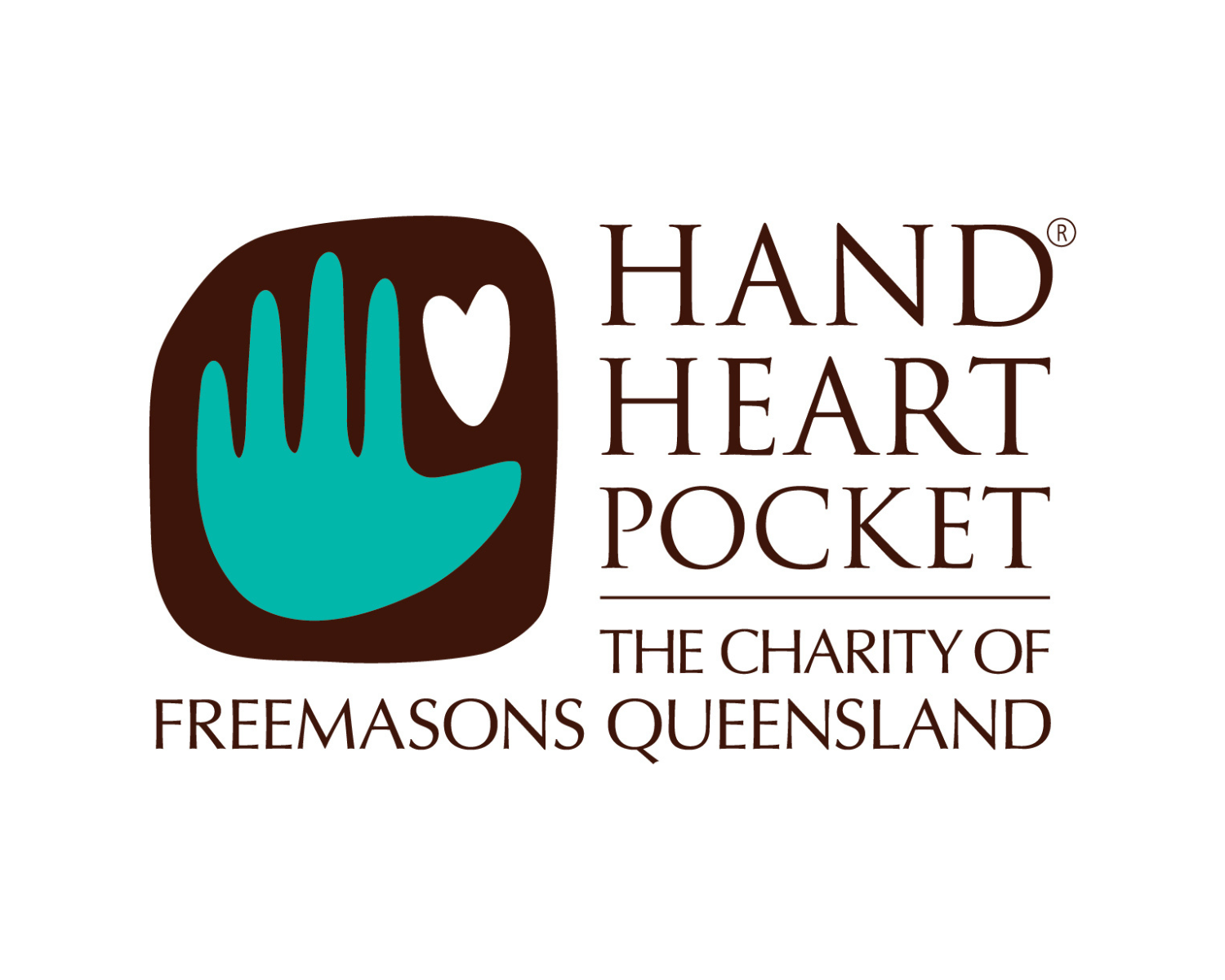
Tell us a little bit about Hand Heart Pocket, its background and how you have designed your giving strategy.
Hand Heart Pocket is the charity of the Freemasons of Queensland. With a history of over 110 years of community work, it was first incorporated in the 1970s. Today, we operate as a philanthropic foundation. We manage an investment portfolio of financial assets that has been built up over the last 100 years by the Freemasons, and that’s money put aside for the benefit of the community. We manage that portfolio and do two things – we do philanthropy from the income and we also do social impact investing with our capital, as well as more traditional responsible investment to earn an income. We’re a relatively small team – there’s about eight of us.
Our purpose is stated as we partner for change for people in need in Queensland and Papua New Guinea. We put that purpose together with lots of thought around the fact that we partner, which means we don’t build things, and we don’t necessarily deliver ourselves, we find great organisations, and great leaders doing things that are very impactful, and we focus on people in need. Our strategic partnerships are focused on young people in need in Queensland, and then we do a range of other things where we support the community more generally, and we also support the members of the Freemasons of Queensland, in their community activity at a local level.
Why do you believe it is important to support remote rural and regional communities in particular?
The Freemasons and Hand Heart Pocket have always been involved in responses to disasters when disaster strikes, and also been a very regionally spread organisation. There are lodges of the Freemasons of Queensland right across the state – there’s about 200. They’re very connected to their local communities. Queensland is the most regionalised of the states – there’s more people living outside of the capital cities in Queensland than any other states. And we really understand the importance of the vibrancy and the sustainability of those communities, for the people who love to live in a more rural setting with more space. It’s really important that we remember that sometimes it’s more difficult to live there. It’s more expensive, the services don’t necessarily reach all the places in Queensland where people love to live. So it’s a combination of where our members are and the heritage of the organisation and also understanding that to sustain healthy and vibrant communities in Queensland. We have to remember that a huge portion of Queenslanders don’t live in the capital city.
Tell us about Hand Heart Pocket’s interest in supporting communities recovering from a preparing for disasters, and also in driving climate solutions?
The board is very forward looking and future focused. And so we understand that an investment in our young people is the best investment that we can make, and that the future that they’re facing is changing quickly. There’s lots of strategic level risks that the community is facing and it could really derail a lot of things about the way that we live our lives and a lot of things that we enjoy. We’ve done some really good risk analysis in our strategy process to understand what climate change will mean, for our organisation and for our members and the local communities. Really, climate change is probably the number one risk. So it, it poses risks to our members and to their communities but it also poses a risk to our organisation from the point of view of what it might do to the assets that we invest in through our investment portfolio and what it might do to in terms of shocks to financial markets, what it might mean for us to have investments that might become stranded assets. So that’s a big part of how we think about it.
And then also, what the possible negative impacts of climate change are on local communities – what it will do to food security, to people’s health, future pandemics, also what it’s going to mean for industries in Queensland. It will have negative impacts on tourism, it will have negative impacts on the Great Barrier Reef. And so there’s lots of communities in Queensland that are facing into very uncertain future.
As a philanthropic foundation, we don’t think about it just in terms of what we give, although it’s embedded into our strategy throughout our relationship with FRRR, but it’s also embedded into our strategy in terms of the way that we invest as well. And we have a responsible investment policy that has an exclusion for new fossil fuels and expansion of fossil fuels. We also have a real focus on investing our money in a way that drives a positive transition, and a sustainable future.
In our giving, we’ve had a historical ability to respond in times of disaster to support communities in Queensland when disaster does strike. We still do that, but we also have a way of giving through FRRR that allows us to invest into what I would call climate adaptation, which is preparation for possible natural disasters and natural hazards like cyclones and floods and fires at a grassroots level. The relationship with FRRR has allowed us to provide a large lump sum of money that FRRR administers and distributes as smaller grants to local grassroots community organisations who are working on all sorts of projects around resilience building in their local community.
We’ve also provided a second round of funding to FRRR to do an additional grant round of small grants that are focused not just on adapting to a potential different future threat from climate change, but also positive action by local communities, to reduce their carbon emissions, and actually mitigate the effects of climate change by changing up their activities in ways that are going to better protect the environment or reduce the carbon emissions. So our response to climate is I suppose weaved through lots of different in different ways through our strategy and the way that we work. And it’s about being future focused, it’s about being really understanding those big system level risks that our community faces. We try really hard to be kind of holistic and really authentic in the way that we address climate.
Tell us more about your partnership with FRRR.
Part of the reason that we’ve partnered with FRRR is because as a philanthropic foundation, we have a small team, and we’re not really geared up to deal with like lots of local communities and do multiple small grants to a large number of organisations across the community.
And so it’s a great partnership for us from that point of view, in that FRRR’s got the expertise, and the relationships across Queensland or across regional and rural communities. And they also have the infrastructure as an organisation to run those grant rounds, which we don’t have. We knew that if we were going to put philanthropic money towards resilience building, that sometimes those small investments, but across a number of different communities can be really, really impactful. We wanted to make sure that the money got down to the grassroots and out to the rural communities, and we didn’t have the capacity to do that. So we were looking for a partner who had the relationships and the internal mechanisms to be able to do it efficiently.
FRRR provides that for us and being able to have a focus on resilience building, and climate adaptation, was what we were looking for. FRRR had the ability and the understanding from a thematic and technical point of view about what those projects would look like in local communities. And then this year, when we came to FRRR saying, we’d like to shift from just disaster response to action on climate, FRRR was really open to that idea, and worked with us to develop the climate solutions grand rounds, so that that extra money could be focused on that as a very specific issue and a specific set of responses from local communities. Again, we didn’t have the infrastructure internally and the people to run those grant rounds and to be able to connect to local communities that we really love the fact that if FRRR already has all that. Our purpose is partnering for change, so we like to work with other organisations, and to be more efficient in the way that we give by joining together with other organisations who are already doing really good work.
Can you tell us a little bit about Hand Heart Pocket of philanthropic activities and partnerships?
There’s an interesting partnership that’s kind of complementary to the work that we do with FRRR. We also have a partnership with GIVIT. Being a Queensland organisation, we know that there’s going to be disasters during and things happening to communities during the summer, which is really unfortunate, but it happens almost every year.
So, in anticipation of that we have a placeholder in our budget for what we might be able to give to disaster. If disaster strikes, we already have a relationship set up with GIVIT where we can respond quite quickly, and we can give them funding and then they distribute that to people in need in local communities. And that’s actually through grassroots organisations. They’re a fantastic partner because they complement what we do with FRRR – so if we want to give immediate disaster relief to GIVIT, which is immediate and small amounts for things like emergency accommodation and replacement of furniture, and then, at the end of the year, if we have some budget put aside for FRRR for disaster response, which is the longer-term recovery, and the planning, and the climate adaptation work.
So those two are complementary – we see them as great partnerships for us to respond to local communities. Both organisations are really set up to support larger donors like us and distribute funds. FRRR’s expertise is in understanding local communities, and how to best inject that support that will really bolster the community’s own capability and GIVIT has a different set of skills, which is really around standing up things quickly in a disaster. So that’s an example of another partnership, but it’s kind of the way that we work – to find organisations that are doing really good work, that have great leaders that have really excellent strategies and are really good at executing. And then we partner with them and back them in their work.
Another thing that we do in our partnerships is we also really believe in that maxim about pay what it takes. With both FRRR and with GIVIT, when we work out a partnership there’s an amount that goes to the partner for their capacity. Every organisation needs governance, and you need to invest into your IT systems, and you need to invest into your people’s learning and development and all those things. And we actually believe that it’s really important when we work with partners that we have, that a good generous amount that actually goes to the organisation on expenses and work. We talk to our partners about that, and we like to understand how much is needed for those organisational costs. So that’s a key part of the way that we work as a partner.
Do have any advice for other philanthropic organisations or individuals, when choosing a not for profit to partner with?
Well, the first thing I’d say is that there’s lots of collaboration happening both with the community in the community sector between organisations that deliver services there, and amongst the funders and the organisations that give, and sometimes there’s organisations that straddle as well.
So, in the kind of area that FRRR focuses on, if you were starting out as a funder, in regional communities or in resilience building or in climate solutions or anything like that, I’d suggest there’s probably two places you could go. First one would be Philanthropy Australia. Philanthropy Australia has great networks of both organisations who deliver services and want to attract philanthropy and organisations who give and want to be part of philanthropic giving, and they have networks that they establish around different topic areas that people are interested in. So if you’re really interested in giving to Aboriginal Torres Strait Islander organisations or issues then you can you can join a network – like a learning circle around how to partner well. They have also lots of professional development opportunities and Philanthropy Australia also run a really interesting network that they call Second Gen, which is about younger people who are starting out in their giving journey, or the second generation of families who have a family history and a real tradition of giving and how to engage in in an interesting way for younger people.
Another really interesting collaborative network is called the Australian Environmental Grantmakers Network. And I know that there’s lots of people within AEGN who are long term staunch supporters of FRRR. And that’s a place where you can go to meet people who are specifically interested in environment and climate. They have a climate community of practice around giving in and responding to climate as a philanthropist or a funder, which is really quite new but really a great place to meet other people who are trying to respond to climate in both their giving and their investing.
Through FRRR you can get connected to other donors, and I think one of the things that FRRR does really well is they act as an intermediary and a channel combining funds from different organisations, so I’m sure FRRR could also be a place where you find collaborations to join.
FRRR Disaster Resilient: Future Ready Burnett Inland (Queensland)
The Foundation for Rural & Regional Renewal (FRRR) has recently commenced the implementation of its Disaster Resilient: Future Ready (DR:FR) initiative in communities and across the Burnett Inland in Queensland. FRRR is delivering this program through local partner Red Earth Community Foundation. The program is made possible through the financial support of the National Emergency Management Agency (NEMA) Preparing Australian Communities – Local Stream, and Minderoo Foundation.
FRRR is seeking proposals from experienced social impact evaluation providers to work with us to:
- Design a Monitoring Evaluation Learning (MEL) approach for the program; and
- Undertake a comprehensive evaluation to understand the outcomes from this investment and the contribution the program has made to disaster resilience in individual communities and across the region.
Supporting Documents
For full details of the evaluation scope and submission requirements please see below:
Request for Proposal – Disaster Resilient Future Ready Burnett Inland Evaluation (PDF)
All submissions must include a completed Budget Template (.docx).
Selection Criteria
- Demonstrated experience in social impact evaluation (as distinct from social research).
- Demonstrated understanding of the requirements, objectives, and motivation of the evaluation.
- Demonstrated knowledge of the program context, policy, purpose, and key stakeholders.
- Proposed evaluation methodology that meets the requirement and suitability of the program and community context.
- Evaluation outputs. Proposals that include a range of outputs including a combination of written reports, case studies, short videos, most significant change interviews, and infographics will be highly regarded.
- Demonstrated knowledge and experience working collaboratively with rural, regional, and remote communities.
- Alignment with FRRR values and aspirations.
- Evidence that relevant insurances, licences, policies, and procedures are in place and compliant with State or Commonwealth laws. Demonstrated health and safety measures including Working with Vulnerable Persons, Working with Children, Occupational Health, and Safety Policies as well as relevant insurances such as Public Liability and Professional Indemnity.
- Willingness to build capability within both FRRR and Red Earth team in the delivery of the project regarding evaluation methodology.
- Overall value for money.
Suitably qualified and experienced individuals or organisations must submit a proposal that includes:
Proposals should be no greater than 30 pages (including attachments).
Key Details
Closing date: Friday, 8 September 2023 at 5:00pm AEST.
Proposals must be lodged via c.larcher@frrr.org.au.
For enquiries or further information, please contact Caroline Larcher, Disaster Resilient: Future Ready Program Manager on 0492 370 586 or c.larcher@frrr.org.au.
On Djiru Country
In far north Queensland, 150 km south of Cairns, the Mission Beach Historical Society (MBHS) is a fledgling association – two years young and dreaming big.
Last month our QLD programs manager visited the MBHS and invited them to write a story to let everyone know about their great work to curate a historical photographic exhibition.
Before the advent of the MBHS in late 2020, Mission Beach had no effective means of making histories and images easily accessible to residents and visitors of this region.
For the two last years, MBHS members have captured and documented some of the Mission Beach histories, having made a bright start with that endeavour. The society’s growing challenge was to find effective ways to share and exhibit MBHS collections. Being without a museum or a building, MBHS relies heavily on online presence and displays. Despite such hurdles, a range of interesting and innovative projects have been undertaken. One of these projects was to present a photographic exhibition.
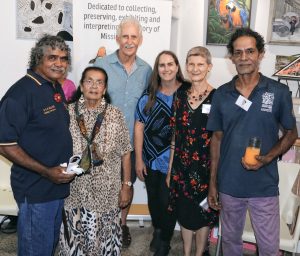
In 2022, MBHS partnered with Community for Coastal & Cassowary Conservation Inc to receive an $8,925 Strengthening Rural Communities grant, funded by the Tim Fairfax Family Foundation, to develop a photographic exhibition ‘Echo of the Past – Historical photographs from Mission Beach, 1890s – 1950s’ and present a series of historical photographs and Djiru cultural objects – coinciding with the anniversary of the 1918 cyclone which devastated the area.
The exhibition project aimed to facilitate cultural connection and transmission of culture of and with Traditional Owners through community engagement, cultural expression and on Country experiences.
The exhibition project was led by MBHS president, Dr Valerie Boll, anthropologist and curator, who worked with Djiru Traditional Owner, Elder and artist Leonard Andy and the Warrangburra Aboriginal Corporation RNTBC – PBC, to source and document Djiru history and photographs. Mission Beach residents were also able to bring in old photographs to be scanned and used to illustrate stories that had been researched by MBHS members. The provided material was then collated.
Like many plans during the last few years, the start of the project was delayed due to COVID. Sadly, the project was also put on pause in the first half of 2022 because of ‘Sorry Business’. Another hurdle for the MBHS volunteers to overcome was the lack of adequate IT equipment. Regardless of this impediment, the efforts of the team came together, and the opening day approached fast.
An enthusiastic crowd (over 100 people) gathered on the 10March for the opening of the exhibition ‘Echo of the Past’, at the Art Print Frame Gallery and was enjoyed by the wider community until the exhibition close earlier this month.
A smaller version of the show is now on display at the Mission Beach library and there are plans for the exhibition to travel around the region for the rest of the year.
Girls from Oz (g-oz) is committed to improving education and employment outcomes for students in remote Australia, particularly Aboriginal girls and women. The g-oz program uses a tried and tested engagement model, developed over 30 years by the Australian School of Performing Arts, to engage and re-engage females living in some of the most at-risk communities in Australia.
Since 2010, more than 200 girls have participated in 14 trips to five capital cities for a week of shared cultural exchange and 105 instructors have assisted in running 126 week-long Community Programs, engaging more than 4,000 girls across five communities.
In 2022, FRRR contributed $9,212 via a Strengthening Rural Communities grant funded by Friends of FRRR and FRRR towards the g-oz ‘Helping to keep language alive in Kowanyama’ project. The aim of the project is to contribute to Kowanyama State School’s efforts to reintroduce the traditional languages of Kowanyama. To complement the initiative, g-oz has begun its support of language preservation and revitalisation via the completion of song translation and transcription.
Over the past four months, g-oz has been meeting and working with local female Elders each school term as part of their Community Program visits. Their instructors have had some great conversations and have identified a song that they can work together with the women to transcribe, record and teach in the traditional language.
g-oz has found that building trusted relationships and working in collaboration with the local women can be a slow process. As their goal is to support the ambitions of the women in the delivery of their language revitalisation project, and especially their work with school students at Kowanyama State School, g-oz plans to walk alongside them, working within the Elders’ timeframe to deliver the project.
g-oz plans to develop teaching resources as part of the recording process and to present the finished songs to the community in May, with monitoring and evaluation to be undertaken before the conclusion of the project in August 2023.
The small community of Bowen, on the north Queensland coast, is economically diverse, boasting agriculture, tourism, fishing and mining. Despite this, it experiences high levels of youth unemployment.
PCYC Bowen branch manager Sergeant Michelle O’Regan explains that having high youth unemployment does not necessarily mean a high youth crime rate, as some might assume, but it does present challenges for the community.
“We take a proactive approach by giving young people leadership and building their employability skills. We tap into local resources and connect schools with businesses to build that sense of community. They say it takes a village to raise a child, so our customer is the whole community – it’s about working together and opening up opportunities for both sides to connect,” said Sergeant O’Regan.
Seed funding
PCYC Queensland’s Greener Futures program aimed to support ten students from Bowen State High School gain hands-on experience in the horticulture industry and assist them to become more employable.

Four years ago, PCYC Queensland received $8,000 through FRRR’s ANZ Seeds of Renewal program to buy some basic equipment for the initiative.
“Without that initial funding, we would have never have got the program off the ground. While the program has evolved over time, looking back [the grant] was pivotal to where we are now,” Sergeant O’Regan explains.
She says that the long-term plan for Greener Futures was two-pronged; to expand quality employment opportunities in local industries for young people facing barriers in the labour market, and to strengthen the economic vitality of the local sector through strategic support and consumer education.
Sergeant O’Regan goes on to say that the initial funds were a catalyst for attracting further support and gave credibility to the initiative and what we were trying to achieve.
“The initial pilot program was a successful partnership between the high school, Stackelroth Farms, and Prospect Agriculture, with in-kind support from other local businesses and organisations that ensured the program’s success.
“This program morphed into the Resilience for life (R4L) program, which focussed on more the psychological wellbeing of our youth and attracted funds from Perpetual. From there R4L eventually became our now hugely successful WORKFit program. We received $20,000 in funds from the Queensland Government, which enabled us to employ a community development officer.
“But without the initial injection of funding from ANZ and support from FRRR, we would have struggled to get the pilot program up and running and, therefore, we would not have ended up with the program we are delivering now.
“All I know, when you build a house you need first the foundation. Small grants – five or six years later we look back and see that those funds were really pivotal to where we are now. We could never have pre-planned that.”
“There are multiple layers – from small things big things can grow. For example, if we don’t have a working kitchen, we can’t hold community events or run mental health awareness programs. A bus, even, can really make a big difference to a small community.”
The role of Philanthropy
Sergeant O’Regan believes that communities need to help themselves rather than being entirely reliant on money.
“The role of philanthropy is about giving that a bit of a boost. That confidence that what they are working towards is going to be beneficial.
“It should be a hand-up, not a hand-out. Some communities are reliant on money coming in from outside, rather than working together. If you want something, you have got to work towards it. Whether it is a raffle or something else. Our young people have put in around 5,000 hours – they really want to be part of what we do.”
Sergeant O’Regan explains that people want to help, but they don’t always know how. Corporates may not have the time or the connection within the community to initiate support, but by spending time with a group, they can often work out where they can help best.
“It’s not always about money. Support can be in time and expertise. For example, I would love to be able to connect with a good business mentor, who would give up a bit of their time, so I can share my vision and ideas.
“It is about working in partnership. Come and have a look, philanthropists – see for yourselves. Let’s work together.”
On Koa Country
Outback Festival Inc is situated in the Queensland outback town of Winton, a 10-hour drive from Cairns. They’re a not-for-profit organisation that was formed in 1972 when the inaugural Winton Outback Festival took place. Since 1973, the festival has been held biennially and has grown from a small-town event attracting fewer than 1,000 visitors to a major regional event that drew in a record 14,976 attendees over the five days – pretty impressive for a town of only 900 people!
With the help of a $45,000 FRRR grant, funded by the Australian Government through the Tackling Tough Times Together program, Outback Festival Inc was able to host one of their largest Festivals capitalising on the holidaying demographic contained to Queensland due to state borders being closed. The theme was ‘Giants of the Outback’ which showcased the story of Qantas and the role that Australia, and the historic town of Winton, has played in the history of air travel.
In 2021, the festival was more crucial to the community than ever, as a lot of locals in Winton and the surrounding towns were feeling socially isolated following the COVID pandemic, not to mention the hit that the economy had taken due to the absence of visitors and tourists.
The festival was hailed an amazing success, with a record 80% increase in numbers that saw upwards of 4,000 visitors book out nearby motels, camping grounds and hotels. Families from all around Queensland road-tripped their way to Winton for an outback school holiday experience.
People from all ages and backgrounds participated in and attended open air concerts, family sports events, arts performances, workshops and even watched a stunning pyrotechnic display.
Winton is known as the birthplace of Qantas and so, to celebrate 100 years of Qantas, a sunset gala dinner with the theme “Centenary of Flight” was held on the Winton airport tarmac with over 300 guests attending along with the 2nd Cavalry Regiment as invited guests.
As a result of the Outback Festival, Winton got a much-needed influx of revenue with more than $1.2 million being spent by attendees during the five days of quintessential Aussie fun. Local business operators reported huge spikes in trading, with some seeing an increase of up to 127%.
For more inspiring stories like this, head to our FY 2021/22 Annual Review.
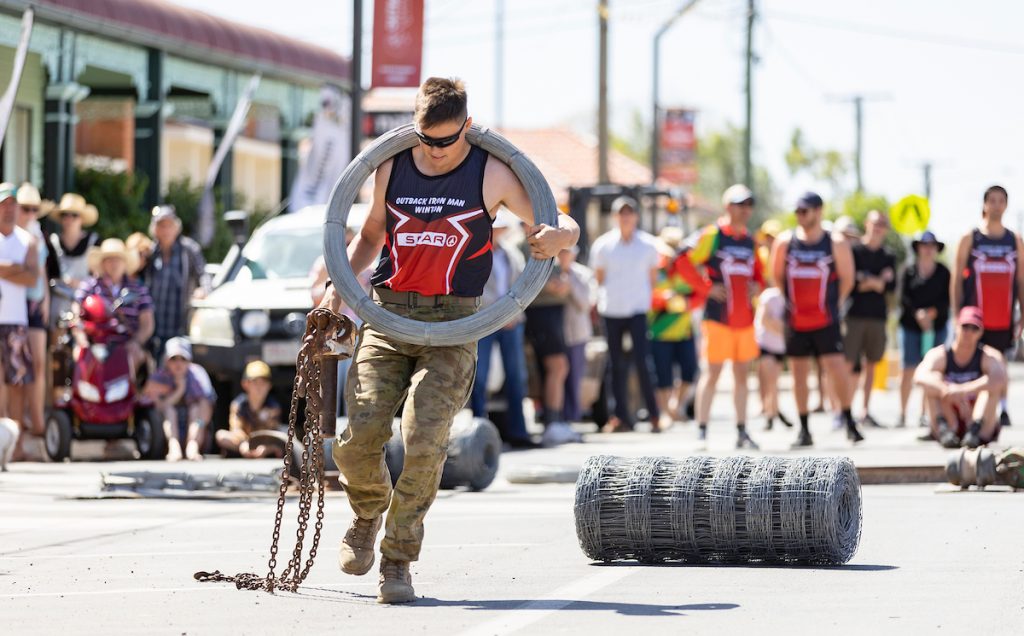 Photos were captured by Barry Alsop of Eyes Wide Open.
Photos were captured by Barry Alsop of Eyes Wide Open.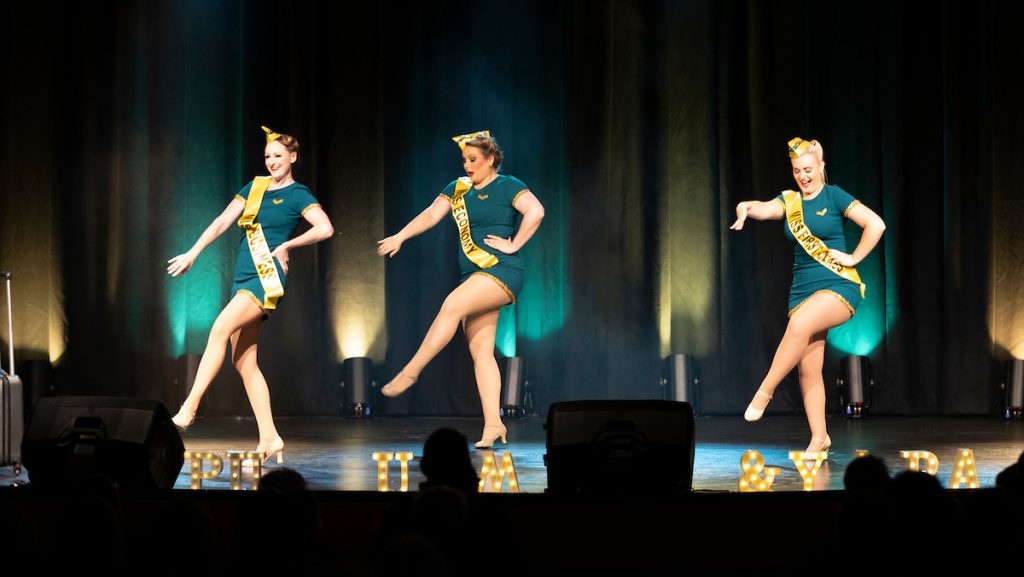 Photos were captured by Barry Alsop of Eyes Wide Open.
Photos were captured by Barry Alsop of Eyes Wide Open.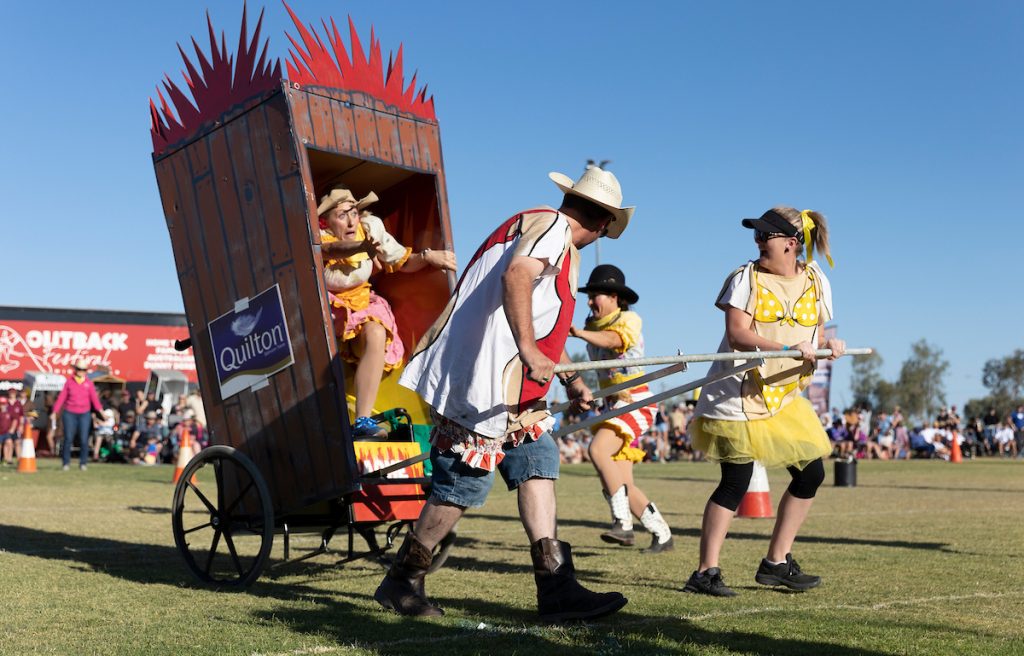 Photos were captured by Barry Alsop of Eyes Wide Open.
Photos were captured by Barry Alsop of Eyes Wide Open.
On Bigambul Country
Macintyre Ag Alliance, a not-for-profit organisation, is based in Goondiwindi, a four-hour drive west of Brisbane. They work collaboratively with the community to enhance agricultural productivity in the area and create healthy land, with the goal of passing on a more stable environment to the next generation.
With the help of a $10,365 FRRR grant through the ANZ Seeds of Renewal program, Macintyre Ag Alliance was able to implement their Skilling Her Enterprise project. The project consisted of a series of workshops focused on upskilling regional women with the key skills they need to build and maintain successful off farm businesses. FRRR funds went toward the costs of some of the speakers who led the workshops as well as venue hire, catering, bookkeeping and admin.
Over a period of five months, three workshops were held which covered topics like business vision and direction, budget, bookkeeping, mindset and mental health, setting up for sustainable success and social media marketing.
At the time of the workshops, the area was being impacted by border closures. Goondiwindi is right on the NSW / QLD border, which meant that some of the women who had planned to attend were unable to make it in person. However, Macintyre Ag Alliance was able to adapt in order to make that particular workshop both an online event and an in-person event, which meant that everyone who wanted to was still able to benefit from the knowledge and insight that the speakers had to share.
It was a great opportunity to showcase some incredible local women, as both the attendees and speakers had a lot to contribute. It provided an opportunity for these women to come together, form a bond and support one another.
“We are most proud of the fact that these like-minded women are now connected through workshops that they all took part in. These sessions facilitated really wonderful and safe discussions and the women went away saying they felt more confident, empowered and motivated to make changes to the way they live their lives and run their businesses.”
Louise Carroll, Coordinator.
For more inspiring stories like this, head to our FY 2021/22 Annual Review.
On Yugambeh Country
The Little Pocket Association is located in Beechmont, a quiet village nestled in the Scenic Rim in south east Queensland. They’re a community organisation that provides a safe and supportive platform for local families to connect with community and place. Because of their work, they were well positioned to assist with the recovery process in the wake of the 2019/20 Black Summer bushfires.
Through the News Corp Bushfire Fund program, FRRR helped to fund The Little Pocket Association’s initiative ‘Regeneration – Creative Bushfire Recovery’ project. The community-led 24-month creative recovery project was designed to offer the community various projects, workshops, events and activities that would culminate in a series of murals and a memorial.
As part of the project, 25 local artists, Indigenous Elders, Scenic Rim counsellors, Creative Community Development Officers, industry professionals from the arts, health and community sector and residents who were deeply impacted by the bushfires, came together and participated in a three-day creative recovery workshop.
Those who attended the workshop underwent creative recovery training, where they built an understanding of what a successful disaster recovery process would look like. Not only did this workshop provide an outline for how the project would take shape but there were so many unexpected outcomes from the weekend.
The connections and friendships that formed over the two days were the foundation from which the project grew. For those who attended, it was full of reflection, self-care, deep connection, healing and learning.
It was also crucial to The Little Pocket Association that there was community and cultural consultation throughout the process. They hosted four community days attended by 200 residents and created an online community where locals could give their input on the murals and memorial that would be created.
After a two-day mural workshop, stage one of the project was completed and has seen beautiful murals adorn the community. The paintings celebrate connection to place and represent the community’s shared experience of the bushfires. The memorial acknowledges and speaks meaningfully to the residents affected by the Sarabah bushfire in September 2019.
“We are so proud of what The Little Pocket and the Regeneration – Creative Bushfire Recovery project has achieved… We have successfully delivered a creative recovery project in our community over the past two years with many creative outputs and so many tangible and intangible outcomes for the community and the individuals who have been involved.”
Jessica Brown, Director of The Little Pocket Association.
The feedback from the artists and community has been overwhelmingly positive. As a result of this initiative, social inclusion has been boosted and a sense of belonging and connectedness within the community has been restored.

